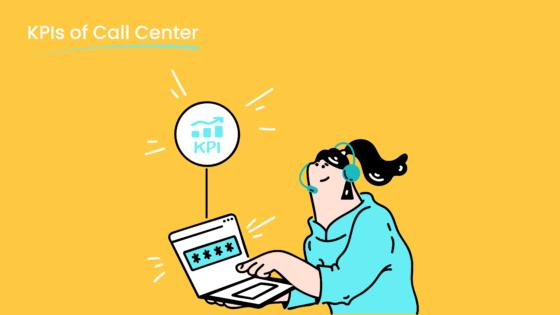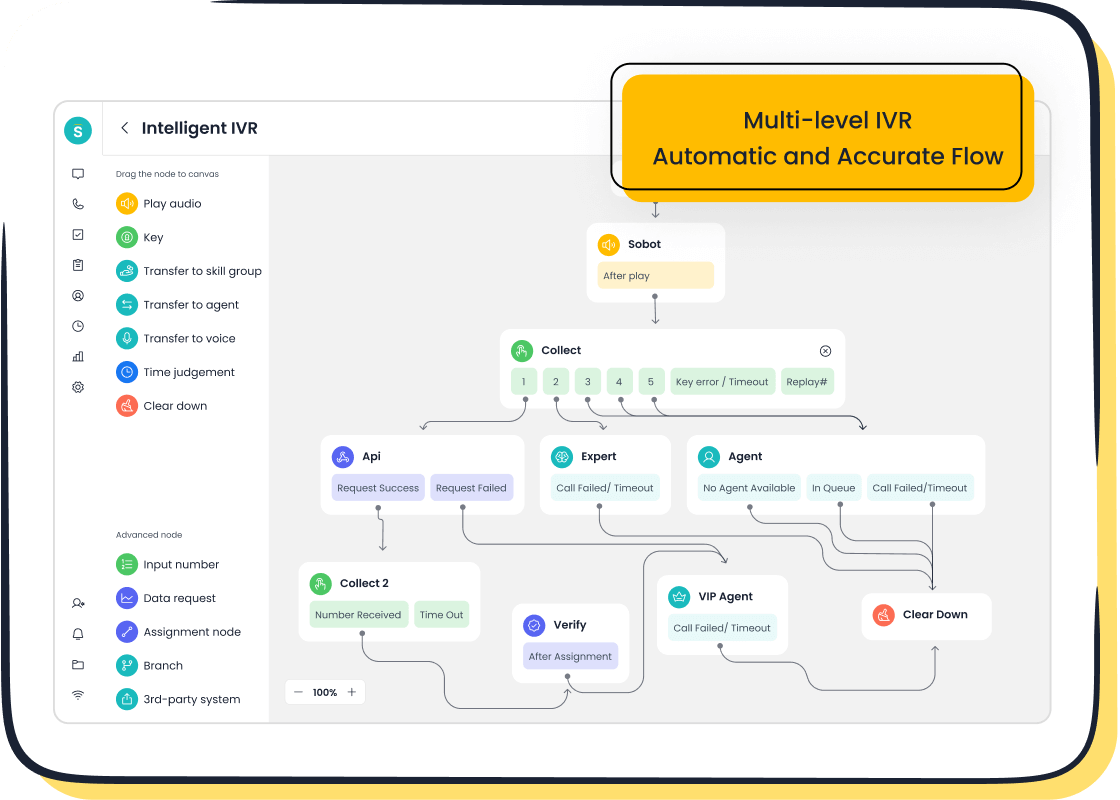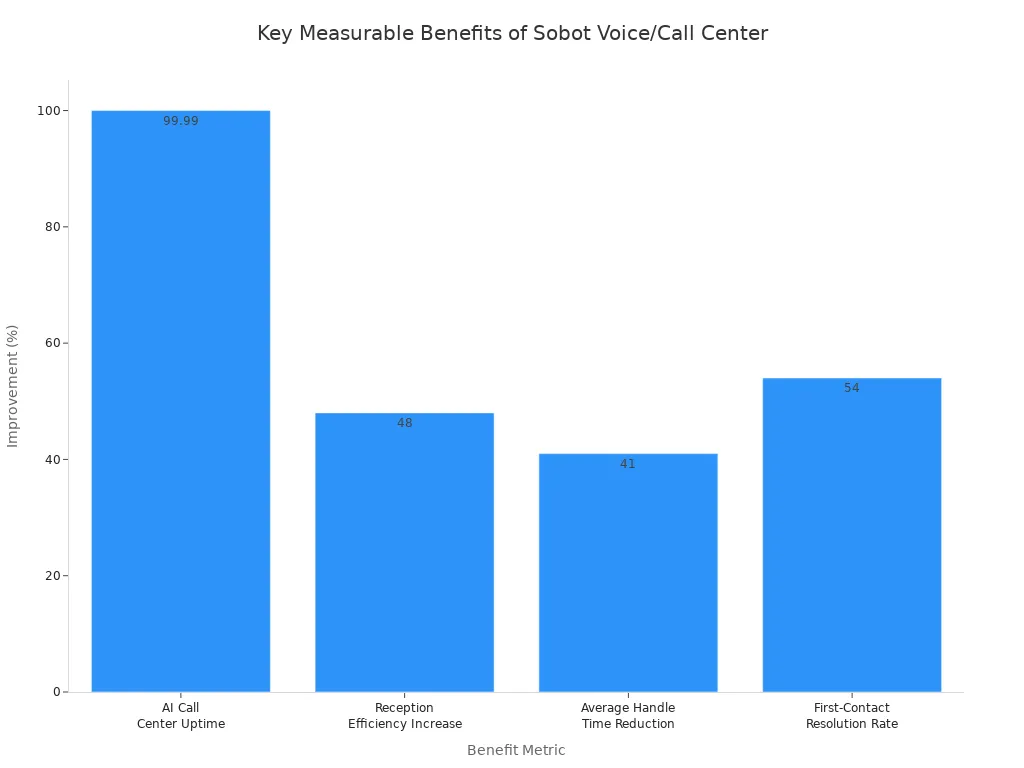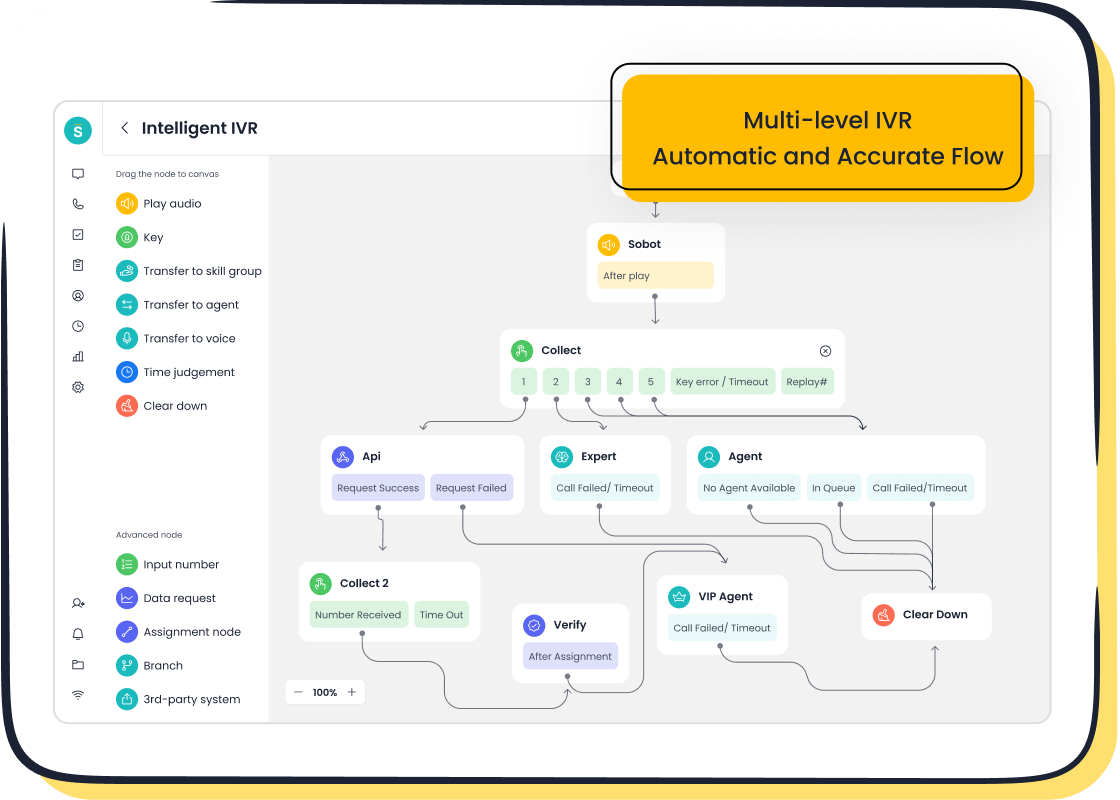What Is Customer Strategy and How It Drives Growth

When you ask what is customer strategy, you look at how a business plans to meet customer needs and drive growth. A strong customer strategy puts the customer first and connects every part of your business to their expectations. For example, Sobot uses AI-powered tools and omnichannel services to help you respond faster, solve issues quickly, and keep customers happy. Companies using Sobot AI and the Sobot call center see faster first response times, higher customer satisfaction, and lower costs. These results show that an effective customer strategy can boost both loyalty and revenue.
What Is Customer Strategy
Definition and Purpose
When you ask what is customer strategy, you look at how a business plans to meet the needs and expectations of its customers. A customer strategy is a clear plan that helps you build strong customer relationships and grow your business. You use this strategy to guide every part of your company, from sales to support. The main goal is to put the customer at the center of your decisions.
You want to know why this matters. A good customer strategy helps you understand what your customers want, how they behave, and what keeps them coming back. You can use this knowledge to offer better products, faster service, and more helpful support. When you focus on your customers, you make it easier for them to choose you over others.
A customer strategy is not just about selling more. It is about building trust, loyalty, and long-term value for both you and your customers.
Here are some primary objectives you aim to achieve with a customer strategy:
- Increase customer loyalty by working closely with your customers and creating solutions together.
- Improve service quality so customers find it easy to do business with you.
- Understand customer needs to offer products and services that solve real problems.
- Expand your share of wallet by encouraging customers to buy more from you.
- Enhance customer satisfaction and retention by focusing on better service and reducing churn.
- Use customer management tools, like CRM systems, to serve and understand your customers better.
- Stand out from the competition by offering reliable products and great value.
When you ask what is customer strategy, you see that it is a plan that helps you connect with your customers, meet their needs, and grow your business in a smart way.
Key Components
A strong customer strategy has several important parts. You need to make sure each part works together to help you reach your goals. Here is what you should focus on:
- Customer-Centric Approach: Always start with your customers. Listen to their feedback and see things from their point of view.
- Clear Communication: Make sure you talk to your customers and your team in a way that is honest and easy to understand.
- Well-Trained and Empowered Staff: Give your team the skills and tools they need to solve problems quickly.
- Accessibility and Responsiveness: Offer many ways for customers to reach you and respond to them fast.
- Empathy and Personalization: Treat each customer as an individual. Show that you care about their needs.
- Continuous Feedback and Improvement: Ask for feedback often and use it to make your service better.
- Alignment with Business Objectives: Make sure your customer strategy supports your company’s main goals.
- Stakeholder Engagement: Involve everyone who has a stake in your business, from employees to partners.
- Effective Communication Channels: Set up clear ways to talk to customers and within your team.
- Measurable Objectives and KPIs: Set clear goals and track your progress.
- Consistency in Service Delivery: Give the same high-quality service every time, no matter the channel.
- Proactive Problem Solving: Try to fix problems before they become big issues.
- Company-Wide Mission: Make customer satisfaction part of your company’s mission.
- Recruitment of the Right People: Hire people who have empathy and good listening skills.
- Ongoing Training: Keep your team learning new skills.
- Documented Customer Service Policies: Write down your rules and workflows so everyone knows what to do.
- Leveraging Technology: Use tools like CRM systems, chatbots, and analytics to improve the customer experience.
Tip: Leading companies use flexible frameworks to build their customer strategy. They combine different models, like Value Disciplines or Balanced Scorecard, to fit their unique needs. This helps them stay focused on customer relationships and turn plans into real actions.
You may face challenges when building your customer strategy. Here is a table that shows some common problems and what they mean:
| Challenge Category | Description |
|---|---|
| Lack of Clear Marketing Strategy | Hard to set goals and measure success. |
| Resource Allocation | Unsure where to spend time and money. |
| Measuring Marketing Initiatives | Difficult to track what works. |
| Adapting to Consumer Behavior | Customer needs change quickly. |
| Identifying Customer Advocates | Hard to find loyal customers who will promote your brand. |
| Maintaining Advocate Engagement | Need to keep your best customers interested and involved. |
| Measuring Advocacy Impact | Tough to see how much customer advocacy helps your business. |
| Integrating Advocacy with Marketing | Need to make sure customer advocacy fits with your other marketing efforts. |
| Overcoming Internal Resistance | Some people in your company may not support new ideas. |
| Coping with Market Competition | You must keep improving to stay ahead of others. |
| Lack of Direction/Vision | Without a clear plan, you may miss out on growth. |
| Designing Systems and Processes | Poor systems can slow you down and hurt customer relationships. |
You can see that a good customer strategy helps you avoid these problems and build stronger customer relationships.
Sobot’s Approach
Sobot shows you what a strong customer strategy looks like in action. The company puts customers at the center of everything it does. Sobot’s mission is to provide all-in-one contact center solutions that make customer interactions better and more efficient. You can see this in how Sobot uses both AI and human support to help customers quickly and with empathy.
Sobot follows industry best practices for customer strategy:
- Sobot uses AI chatbots to handle simple questions, so human agents can focus on more complex issues. This saves time and keeps service fast.
- The company trains its AI tools often, making sure they stay accurate and helpful.
- Sobot’s solutions work with your existing systems, like CRM and knowledge bases, so you get a complete view of each customer.
- The company tracks important metrics, such as response time and resolution rate, to keep improving.
- Sobot protects customer privacy and follows ethical standards in all its services.
- You get support across many channels, including phone, chat, and social media, for a true omnichannel experience.
Sobot has also launched an "AI-First" strategy. This means you get the benefits of next-generation AI, such as:
- Omnichannel AI that connects all your customer channels.
- Scenario-Based AI that understands different customer situations.
- Multi-Faceted AI that handles many types of questions.
- Generative AI that creates helpful responses.
- Secure AI that keeps customer data safe.
For example, OPPO, a leading smart device brand, used Sobot’s omnichannel AI solution to connect its website, app, and social media. This helped OPPO increase its repurchase rate by 57% and achieve an 83% chatbot resolution rate. Sobot’s approach made it easier for OPPO to manage customer relationships and deliver better service.
Note: Sobot’s customer-centric mission matches the best practices in the industry. The company balances automation with human empathy, uses real-time data, and focuses on hyper-personalization. This helps you build trust and loyalty with your customers.
When you use Sobot, you get a customer strategy that grows with your business. You can handle more customer requests, solve problems faster, and keep your customers happy. Sobot’s solutions help you build strong customer relationships and stand out in a crowded market.
Why Customer Strategy Matters
Business Growth
You want your business to grow. A strong customer strategy helps you reach that goal. When you focus on the customer, you see real results. You can track important numbers like customer acquisition cost, lifetime value, and churn rate. These numbers show how well your customer strategy works. For example, when you improve the first visit, demo, or onboarding experience, you increase retention and conversion. You can use the AAARRR funnel model to break down each stage of the customer journey. This model covers Acquisition, Activation, Adoption, Retention, Revenue, and Referral. By watching these stages, you make sure your customer strategy covers every step.
You also need to keep checking your data. Use dashboards and analytics to see what works and what needs to change. When you adjust your customer strategy based on real data, you drive business growth. Sobot helps you do this by giving you tools to track and improve every customer interaction. With Sobot’s unified workspace and AI-powered analytics, you get a clear view of your customer journey and can make smart decisions.
Tip: Retaining existing customers costs less than finding new ones. Loyal customers buy more and help your business grow faster.
Competitive Advantage
A good customer strategy sets you apart from others. You use data to understand your customers better. Companies that use big data analytics, like Sobot, can personalize service and predict what customers want next. This gives you an edge in the market. When you know your customers’ needs, you can offer products and services that fit them perfectly.
You also build a culture that values data and teamwork. This helps you make quick decisions and adapt to changes. Sobot’s omnichannel solutions let you connect with customers on any platform, making your service stand out. Real-time analytics help you spot trends and act fast. This kind of customer service strategy keeps you ahead of the competition.
- Personalization increases customer satisfaction and sales.
- Data-driven decisions help you use resources wisely.
- Fast adaptation to market trends keeps your business strong.
Customer Loyalty
Customer loyalty is the key to long-term success. A strong customer strategy builds trust and emotional connections. When customers feel valued, they come back again and again. Loyal customers spend more—67% more than new customers. They also refer friends and family, helping you grow your customer base.
You can boost customer loyalty by making every interaction personal and easy. Use feedback, rewards, and great service to keep customers happy. Sobot’s customer service strategy supports this by offering seamless experiences across all channels. Even a small increase in customer retention can raise your revenue by up to 29% (source). Loyal customers are less likely to leave, even when prices change or new competitors appear.
Note: Building long-term customer relationships means you get more value from each customer and create a stable base for business growth.
Customer Service Strategy Essentials

Understanding Customers
You need to start your customer service strategy by truly understanding your customers. When you know what your customers want, you can design support that meets their needs and even goes beyond customer expectations. Deloitte Digital explains that you should focus on the whole customer journey, from before a purchase to after the sale. This approach helps you turn every interaction into a chance to build a stronger connection. You can use data and customer feedback to learn about customer behavior and pain points. When you listen and act on this feedback, you improve your customer service strategy and make each experience better.
A strong customer service strategy includes these core elements:
- Personalization—Most support leaders say it sets you apart. Personalized support can double satisfaction and retention.
- Frictionless processes—Make things easy for your customers by removing obstacles.
- Fast replies—Almost all customers want quick answers. Automation and chatbots help you deliver.
- Self-service—Many leaders find that self-service options lower call volume and let you focus on complex issues.
- Omnichannel support—Customers expect the same great service on every channel.
- Proactive support—Try to solve problems before customers ask.
- Tailored support—Understand each customer’s journey for faster, more caring help.
- Automation and AI—Most leaders believe technology boosts efficiency and employee engagement.
- Customer feedback—Use it to guide improvements.
- Employee satisfaction—Happy staff give better service.
Tip: When you align your customer service strategy with the full customer journey, you help your business grow and build loyalty.
Aligning with Brand Identity
Your customer service strategy should match your brand identity at every step. You want your customers to feel the same message and tone, no matter how they contact you. Make sure your team follows brand guidelines and uses the right voice on every platform. When you do this, you build trust and avoid confusion. You also show that your company cares about customer support and values each customer.
You can embed your brand values into your company culture. When your team truly believes in these values, they show them in every customer interaction. This creates real connections and helps your brand stand out. Authenticity matters. When your actions match your words, you earn loyalty and respect.

Sobot Voice/Call Center
You can use technology to deliver consistent, high-quality customer service strategy. Sobot’s Voice/Call Center gives you a powerful tool to meet customer needs. The system offers 99.99% uptime, so your support stays available. You get features like smart call routing, AI-powered voicebots, and easy integration with CRM systems. These tools help you answer calls faster and solve problems on the first try.
Here is a table showing the measurable benefits businesses have seen with Sobot Voice/Call Center:
| Benefit Metric | Measurable Improvement |
|---|---|
| AI Call Center Uptime | 99.99% |
| Reception Efficiency Increase | 48% |
| Average Handle Time Reduction | 41% |
| First-Contact Resolution Rate | 54% |
| Customer Satisfaction (NPS) | Increased after 2-3 months |
| Integration with CRM Systems | Easy and fast |
| Call Routing and Recording | Improved |
| Service Stability | Robust and stable |

Sobot’s omnichannel solutions let you connect with customers on voice, chat, email, and social media. You can track customer service metrics like Net Promoter Score (NPS) and use customer feedback to keep improving. When you use Sobot, you make your customer service strategy stronger and more reliable. This leads to better customer service success and higher loyalty.
Effective Customer Service Strategy in Action

Personalization
You want your customer service strategy to make every customer feel special. Personalization means you use what you know about each customer to give them the right help at the right time. When you use an effective customer service strategy, you can greet customers by name, remember their past questions, and suggest solutions that fit their needs. This approach builds trust and makes the customer experience better.
Sobot helps you deliver personalized service by using AI to track customer history and preferences. With Sobot’s unified workspace, your team sees all customer data in one place. This lets you answer questions faster and offer solutions that match each customer’s situation. Personalization is not just about using a name. It is about understanding what the customer wants and making every interaction count. When you do this, you increase loyalty and drive customer service success.
Automation and AI
Automation and AI play a big role in an effective customer service strategy. You can use AI-powered chatbots to answer common questions, which saves time for both your team and your customers. Automation handles simple tasks, so your agents can focus on complex problems that need a human touch.
Here are some ways automation and AI improve your customer service strategy:
- AI can solve complex tasks and reduce repetitive work, leading to faster and more personalized resolutions.
- Self-service tools move beyond basic FAQs. They now offer dynamic support that updates automatically and anticipates customer needs.
- Conversational AI understands what customers want and how they feel. It routes them to the right agent and gives real-time suggestions, making interactions smoother.
- Generative AI acts as a helper for agents, giving instant access to information and summarizing chats, which keeps agents happy and reduces burnout.
- Predictive analytics spot problems early, so you can fix them before they grow.
Sobot’s AI-powered solutions let you automate routine tasks and provide quick, accurate answers. This makes your customer service strategy more efficient and keeps customers satisfied.
Omnichannel Experience
An effective customer service strategy connects all your support channels. Customers want to reach you by phone, chat, email, or social media—and they expect the same high-quality service every time. Research shows that companies with strong omnichannel strategies keep 89% of their customers, while those with weak strategies keep only 33% (source). This shows how important a seamless customer experience is for loyalty.
You can use Sobot’s omnichannel solution to bring all your channels together. Customers can start a conversation on live chat, switch to email, or even call your team, and you will always have their full history. This unified approach means you never lose context, and customers get fast, consistent help. Key channels include live chat, email, social media, SMS, phone, and in-person visits. AI-powered chatbots handle routine questions across these channels, while your agents focus on more complex needs.
A strong customer service strategy uses omnichannel tools to make sure every customer gets the help they need, no matter how they reach out. This leads to higher satisfaction and long-term loyalty.
Case Studies and Results
OPPO and Sobot
You can see the real impact of a strong customer strategy by looking at OPPO’s partnership with Sobot. In February 2025, OPPO started using Sobot’s chatbot to handle repetitive customer questions. This move helped OPPO reach an 83% resolution rate for these queries. Customers responded well, giving a 94% positive feedback rate. These results show how a focused customer strategy can boost both efficiency and customer satisfaction. When you use technology like Sobot’s, you help your team solve problems faster and make each customer feel valued.
Key Takeaways
You learn several important lessons from OPPO’s experience. First, building a strong brand image leads to higher customer satisfaction. Factors like brand awareness, perceived quality, and brand loyalty all play a big role. Reliability stands out as the most important part of brand image for customers. Product innovation and brand image together drive over half of purchase decisions. When you focus on these areas, you see better business outcomes and more loyal customers.
| Metric | Improvement Observed | Impact/Explanation |
|---|---|---|
| Revenue Growth | 10% or more | Companies using agentic AI, like Sobot, see strong revenue growth. |
| Customer Satisfaction Scores | 63% report marked improvements | Generative AI boosts customer satisfaction. |
| Churn Rate Reduction | 20% reduction | Better customer retention and more repeat purchases. |
| Staffing Savings | Up to INR 362.84 million | AI automation leads to big operational savings. |
Note: Customer feedback helps you track these improvements and adjust your customer strategy for even better results.
Industry Applications
You find Sobot’s customer strategy solutions in many industries. In retail and eCommerce, Sobot helps you engage customers and increase sales with all-in-one contact solutions. At events like the Malaysia Retail & E-Commerce Summit, Sobot shared how AI-powered personalization improves customer journeys and service. These tools help you keep up with changing customer needs and deliver high customer satisfaction. You can use Sobot’s solutions to build loyalty and drive growth in your own business.
You can drive business growth and boost customer satisfaction with a smart customer strategy. Sobot’s AI-powered tools help you unify customer data, automate support, and deliver seamless customer experiences across every channel. In the next five years, customer success will rely on real-time insights, voice technology, and hyper-personalized service. Start by mapping your customer journey, listening to customer feedback, and using advanced solutions like Sobot to meet every customer need. Take action now to build a future-ready customer strategy that keeps your business ahead.
FAQ
What is a customer strategy, and why does it matter?
A customer strategy is a plan you use to meet customer needs and grow your business. When you focus on customer strategy, you build loyalty, increase sales, and stand out in your market. Sobot helps you create and manage a strong customer strategy.
How does Sobot support my customer strategy?
Sobot gives you tools like AI chatbots, a voice/call center, and omnichannel solutions. These help you respond faster, solve problems, and keep customers happy. You can track your customer strategy results with real-time data and analytics.
Can a customer strategy improve customer satisfaction?
Yes! A good customer strategy helps you understand what your customers want. You can use feedback, automation, and personal service to make every experience better. Sobot’s solutions help you deliver high-quality support and boost satisfaction scores.
What industries benefit most from a customer strategy?
You see customer strategy working in retail, finance, gaming, and more. For example, OPPO used Sobot’s customer strategy tools to raise its repurchase rate by 57%. Any business that values customer loyalty and growth can benefit from a strong customer strategy.
See Also
Enhance SaaS Customer Support Through Live Chat Techniques
Artificial Intelligence Agents Transform Customer Service Experience
Ways Chatbots Improve Satisfaction For Online Shoppers
Increasing Efficiency With AI-Powered Customer Service Tools
